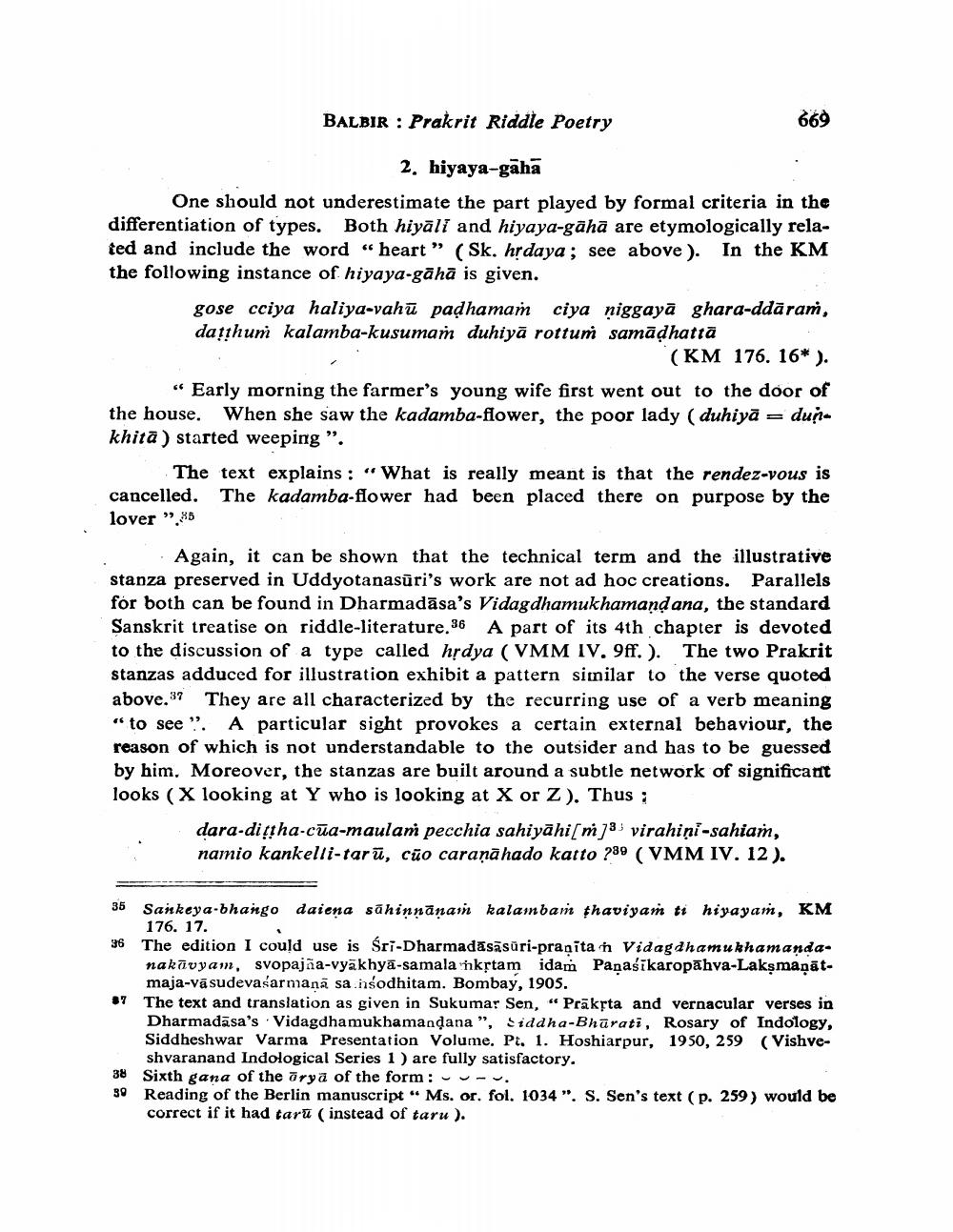Book Title: Prakrit Riddle Poetry Author(s): Nalini Balbir Publisher: Nalini Balbir View full book textPage 9
________________ BALBIR : Prakrit Riddle Poetry 669 2. hiyaya-gaha One should not underestimate the part played by formal criteria in the differentiation of types. Both hiyāli and hiyaya-gāhā are etymologically related and include the word “heart” (Sk. hrdaya; see above). In the KM the following instance of hiyaya-gäha is given. gose cciya haliya-vahū padhamam ciya niggayā ghara-ddāram, dathum kalamba-kusumam duhiyā rottum samādhattā (KM 176. 16*). “ Early morning the farmer's young wife first went out to the door of the house. When she saw the kadamba-flower, the poor lady (duhiyā = dun. khitā) started weeping”. The text explains : "What is really meant is that the rendez-vous is cancelled. The kadamba-flower had been placed there on purpose by the lover " 45 Again, it can be shown that the technical term and the illustrative stanza preserved in Uddyotanasūri's work are not ad hoc creations. Parallels for both can be found in Dharmadāsa's Vidagdhamukhamand ana, the standard Sanskrit treatise on riddle-literature.36 A part of its 4th chapter is devoted to the discussion of a type called hrdya (VMM IV. 9ff.). The two Prakrit stanzas adduced for illustration exhibit a pattern similar to the verse quoted above.37 They are all characterized by the recurring use of a verb meaning " to see". A particular sight provokes a certain external behaviour, the reason of which is not understandable to the outsider and has to be guessed by him. Moreover, the stanzas are built around a subtle network of significant looks (X looking at Y who is looking at X or Z). Thus ; dara-di dha-cūa-maulam pecchia sahiyahi[m] virahiņi -sahiam, namio kankelli-tar ū, cão caraņāhado katto 289 (VMM IV. 12). 35 Sankeya-bhango daiena sāhinnānam kalambam thaviyam ti hiyayam, KM 176. 17. 36 The edition I could use is Sri-Dharmadāsāsüri-pranita in Vidagdhamukhamanda nakāvyam, svopajäa-vyakhyā-samala nkstam idam Panaśikaropahva-Lakşmaņāt. maja-Väsudevasarmana sa nsodhitam. Bombay, 1905. The text and translation as given in Sukumar Sen, “Praksta and vernacular verses in Dharmadāsa's Vidagdhamukhamandana ", Siddha-Bhārati, Rosary of Indology, Siddheshwar Varma Presentation Volume, Pt. 1. Hoshiarpur, 1950, 259 (Vishve shvaranand Indological Series 1 ) are fully satisfactory. 38 Sixth gana of the āryā of the form : u-. Reading of the Berlin manuscript " Ms. or. fol. 1034". S. Sen's text (p. 259) would be correct if it had taru (instead of taru ).Page Navigation
1 ... 7 8 9 10 11 12 13
